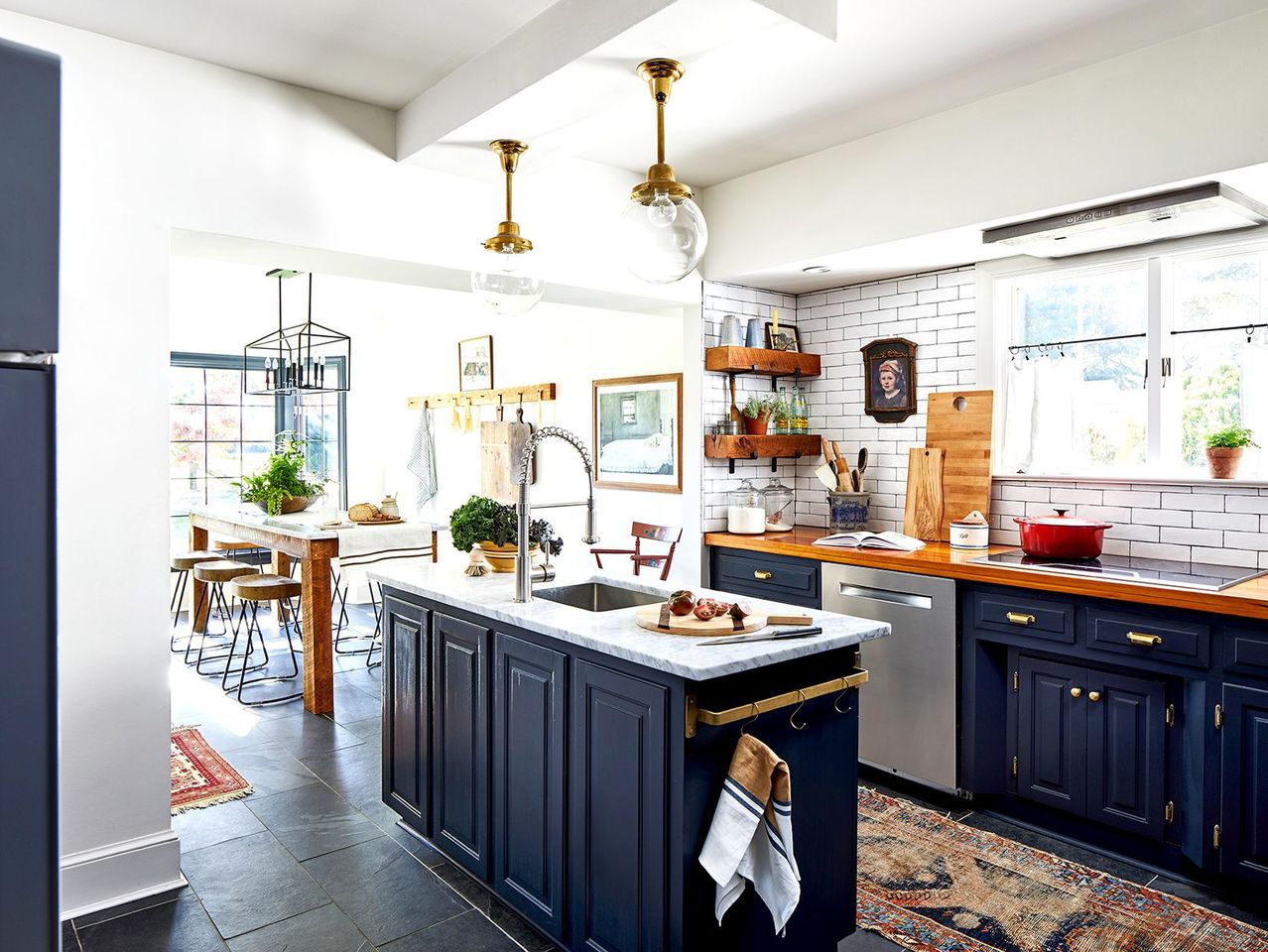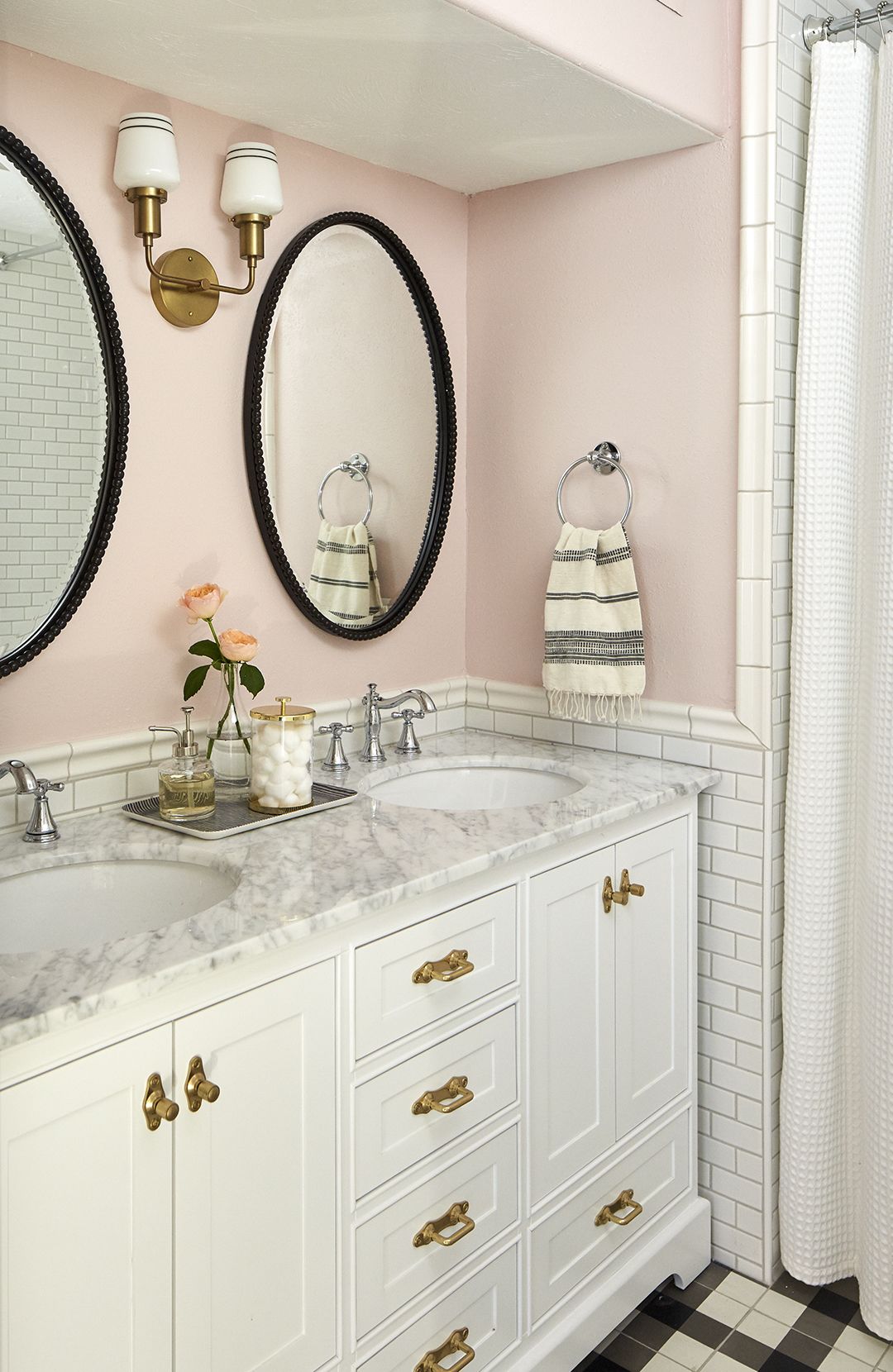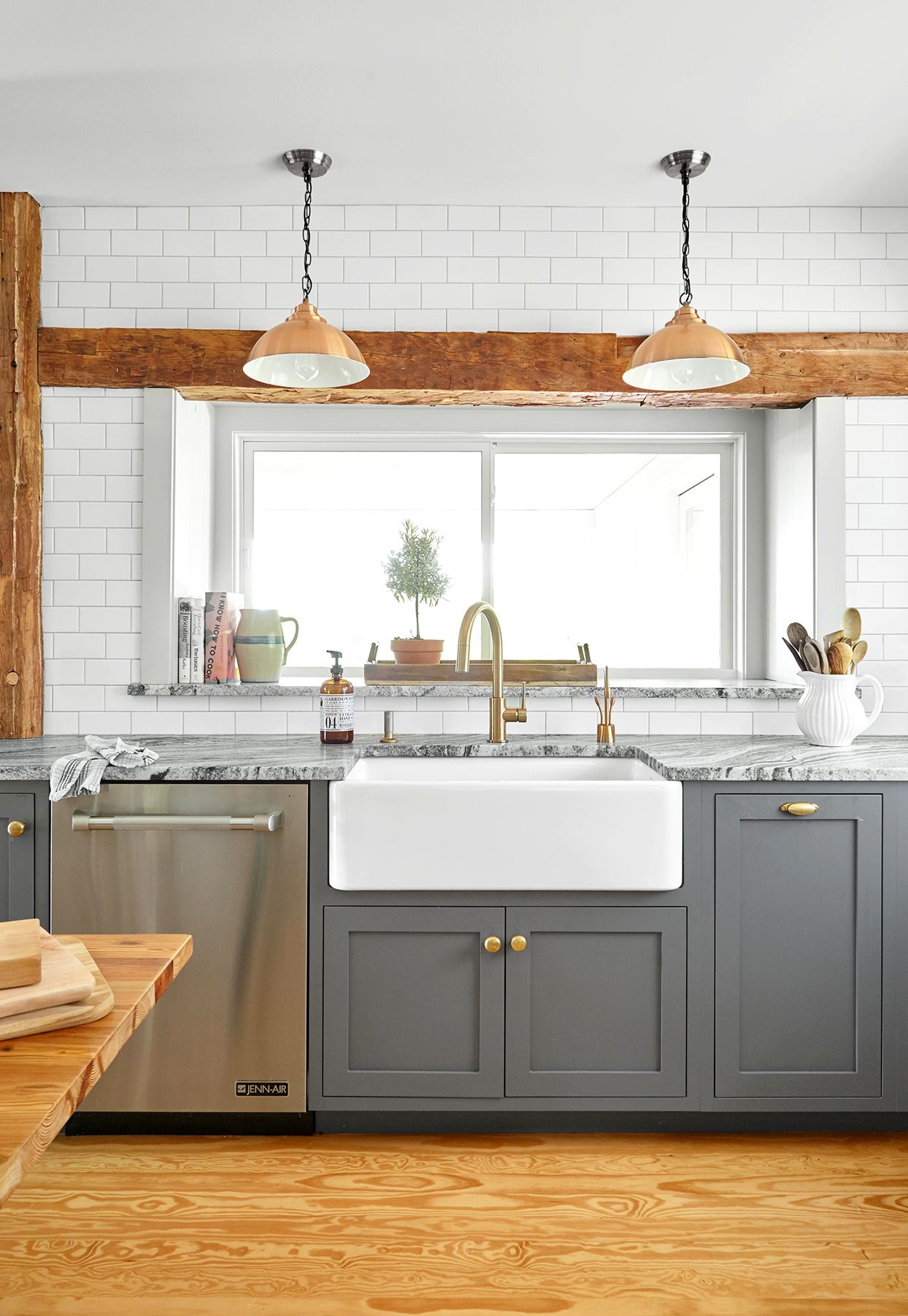There's no rule that states every finish in your home has to match. In fact, it's often better if they don't. Mixing metals has become a favorite way to create a collected-over-time look in kitchens, bathrooms, living areas, and more. Varying metal finishes across hardware, furniture, lighting, and other fixtures adds depth and character that a matchy-matchy look would lack.
For those without much design experience, however, deciding on the right combination of metals and applying them within the space can be daunting. There's no perfect formula for determining how to mix metals correctly, but New York-based interior designer Courtney McLeod of Right Meets Left Design has several strategies for achieving a mixed-metal look you'll love. Follow these tips on mixing metals to effortlessly pull off this trend at home.
1. Select one metal as your primary finish.
A hierarchy of finishes is the key to success when mixing metals, McLeod says. A room where metal finishes are split 50/50 or in perfect thirds can feel chaotic and unfocused. "When you walk into the room, you should be able to recognize that there's one primary color," she says. "Pick one finish to use as a focal point, and incorporate other finishes as accents to complement it." Start with a metal that reflects the overall aesthetic of the room. Satin or polished nickel works well in traditional-style spaces, for instance, while matte black offers a more contemporary feel.
In general, McLeod tends to stray away from high-shine finishes like chrome and polished brass, which can be difficult to mix effectively with other metals. Polished brass can quickly veer into tacky '80s territory if you're not careful, so an aged, brushed, or satin finish tends to work better, she says. For silver-tone finishes, McLeod prefers nickel over chrome because its warm undertone harmonizes better with brass finishes.
2. Choose complementary metals for accents.
Aim to have your dominant metal make up approximately 60-75% of the finishes in the room, McLeod suggests. Then choose one to two accent metals for the rest, paying attention to the undertone to help determine which metals go together. In general, brass, copper, gold, and nickel have warm undertones, while stainless steel, chrome, and other silver metals give off a cooler look. Matte black is fairly neutral. Although you can mix warm with cool, McLeod notes that you'll have to be careful to avoid clashing. When mixing two very different metals, such as polished stainless steel with aged copper, bridge the gap with a finish that's somewhere in the middle, like brushed stainless steel.
3. Vary the finish as well as the metal type.
Metals can be antiqued, matte, satin, brushed, or polished, and incorporating a variety of sheens can make mixing metals even more interesting. "If you want to use nickel and brass together, go with polished nickel and satin brass," McLeod suggests. Contrasting soft with shiny adds more distinction and depth to the pairing. She also warns that combining two polished finishes can result in a very glam look, so if that's not your intent, err on the side of matte to satin metals. "Softer, more muted finishes that don't have a lot of shine are easier to mix than polished ones," she says.
4. Distribute the metals throughout the room.
Following your hierarchy of finishes, apply your chosen metals throughout the room. In a kitchen, for instance, McLeod suggests choosing cabinet hardware in your primary finish and using the faucet to showcase your accent metal. To ensure a cohesive effect, consider bringing in a mixed-metal light fixture or piece of furniture that combines both of your desired finishes.
5. Go with what you love.
"Don't be afraid of your own taste and style," McLeod says. If you love the classic look of nickel, for example, don't feel pressured to choose brass just to keep up with the latest trends. Choose metals that reflect your personality and complement your existing paint colors and surfaces. If you like the result, consider it a success.



![A Tranquil Jungle House That Incorporates Japanese Ethos [Video]](https://asean2.ainewslabs.com/images/22/08/b-2ennetkmmnn_t.jpg)









